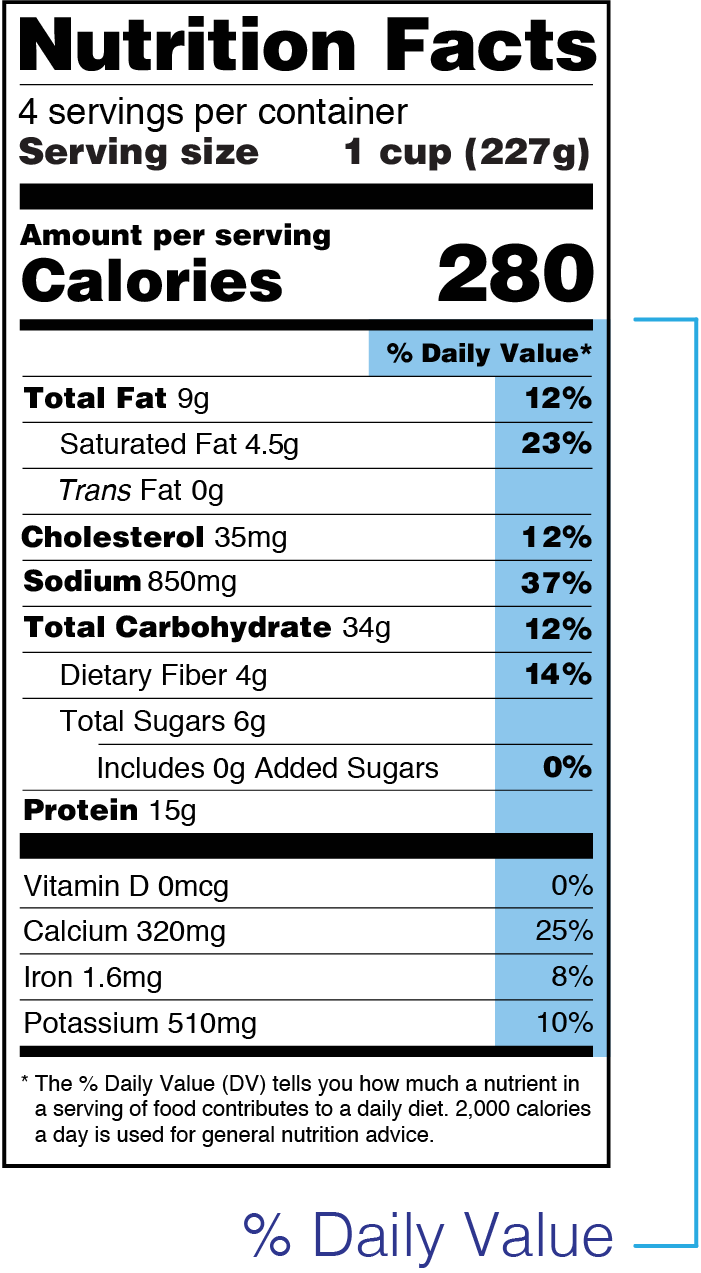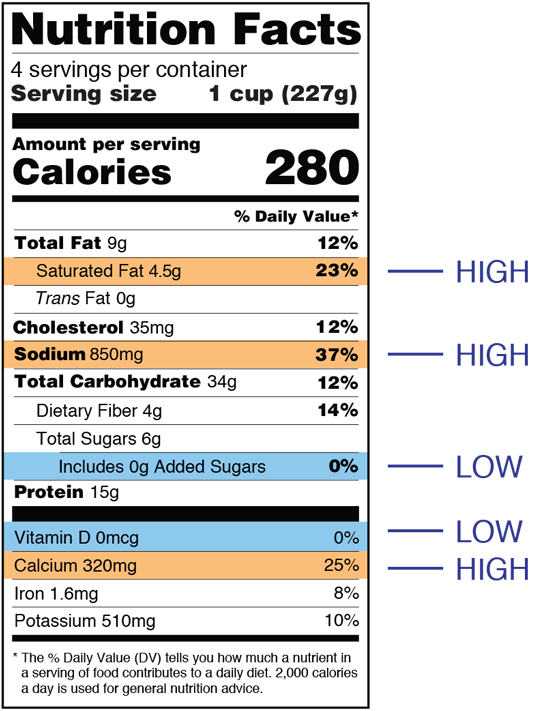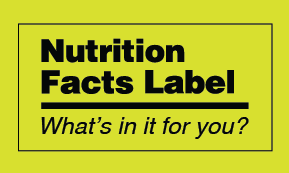The Lows and Highs of Percent Daily Value on the Nutrition Facts Label
The Nutrition Facts label on packaged foods and drinks makes it easier for you to make informed choices.
Read on to learn more about Percent Daily Value.
Serving Size | Calories | Percent Daily Value | Added Sugars
Percent Daily Value Explained
The percent Daily Value (%DV) shows how much a nutrient in a serving of food contributes to a total daily diet.
The %DV can help you determine if a serving of food is high or low in a nutrient.
The Daily Values are reference amounts (in grams, milligrams, or micrograms) of nutrients to consume or not to exceed each day.
Visit Daily Value and Percent Daily Value on the Nutrition and Supplement Facts Labels to learn more.
Use Percent Daily Value (%DV) to Make Informed Choices
%DV can help you make informed choices about what you eat and drink.
- Compare Foods: %DV makes it easy for you to make comparisons. Just make sure the serving sizes of each product are the same. Look at the %DV of the different nutrients and more often choose foods that contain more of the nutrients you want to get more of and less of nutrients you may want to limit.
- Manage Dietary Trade-Offs: You don’t have to give up a favorite food to have a healthy diet. Use %DV to make dietary trade-offs with other foods throughout the day. When a food you like is high in a nutrient you want to get less of—or low in a nutrient you want to get more of—you can balance it with foods that are low (or high) in that nutrient at other times of the day.
Use %DV to determine if a serving of the food is high or low in an individual nutrient. As a general guide:
- 5% DV or less of a nutrient per serving is considered low.
- 20% DV or more of a nutrient per serving is considered high.
More often, choose foods that are:
- Higher in dietary fiber, vitamin D, calcium, iron, and potassium.
- Lower in saturated fat, sodium, and added sugars.
What About Trans Fat, Protein, and Total Sugars?
Some nutrients do not have a %DV
- Protein generally has no percent Daily Value (%DV) listed on the label, so use the number of grams (g) as a guide.
- Trans fat and total sugars have no percent Daily Value (%DV), so use the number of grams (g) to compare and choose foods.
What’s That Footnote at the Bottom?
The footnote explains how much a nutrient in a serving of food contributes to a daily diet and that 2,000 calories a day is used for general nutrition advice.
Daily Values in Action
Take a look at the sample label for frozen lasagna below. Is this product HIGH in any nutrients (over 20% DV) or LOW in any nutrients (under 5% DV)? Be sure to check labels when you shop to see which nutrients are HIGH or LOW in the products you buy.
Sample Label for Frozen Lasagna
Learn More:






